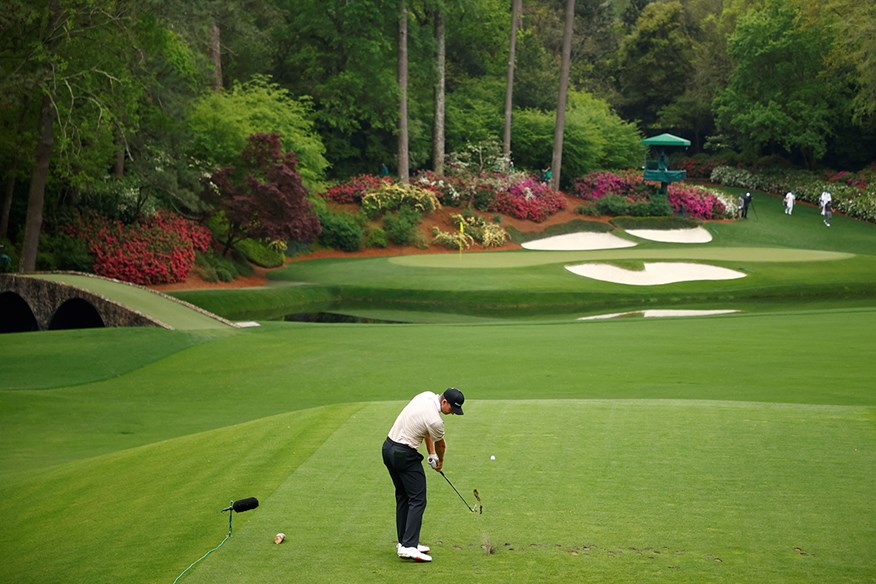Masters leader Justin Rose: My secrets to playing well at Augusta
Published:
With two runners-up and 14 other top-25 finishes, Justin Rose has a stellar Augusta record. The first-round leader for a record fifth time after Thursday at the 89th Masters Tournament reveals his strategy for going low among the azaleas.
Justin Rose clearly has a strong affinity with Augusta National and the Masters. His face lights up whenever he starts talking about the first major of the year.
His love for, and intimate knowledge of, the golf course is immediately obvious. He’s animated as he recalls specific shots and describes the intricacies of each and every hole.
And why wouldn’t he love the place, given he has such a fantastic record there?
Rose has played the Masters 19 times, dating back to his debut as a 22-year-old in 2003. He has three missed cuts and six top 10s to his name since then, including two seconds, in 2015 and 2017.
As a consequence, few players in the field will enter this year’s Masters with as much accumulated knowledge or as many rounds under their belt as the 2016 Olympic champion. So, an obvious first question…
Why do you play so well at Augusta National – what’s the secret?
I think the bottom line is that it’s an awe-inspiring place and somewhere I like to be. The Masters is something I focus on and prepare for. It’s not just one week of the year, it’s about three months of preparation. I go to Augusta to play a couple of rounds before the Masters each year.
I’ve collected a lot of good data during that time and I understand a lot of the pin placements. Augusta is about angles, really. Where you can and can’t miss. The fairways are really wide there, so putting yourself in position to have the best approach, knowing certain pins to respect, and knowing the lines to use the feeder slopes to pins is important. It’s little things you pick up through the years.
There are secrets, but at the end of the day, it’s about execution. Even if you know the shot to hit at Augusta, if you don’t hit it, you’re in trouble.
There’s an accepted wisdom that you need experience to play well at Augusta. How true is that?
Yeah, it’s true. You’ve got to respect the golf course. It’s a classic risk-reward layout in a lot of places and it sort of baits you, especially the back nine. It can bait you into making aggressive decisions that could pay off, or poor decisions that you can get punished on.
You’ve got to have discipline to play that golf course. But at the same time, if you hit the right shot at the right time, magic can happen.
For example, the right shot into No.7 can feed back to the hole. Same at 14. If you hit the right shot at 16 you can make a one. It starts with the Par 3 Tournament. They know where to put those pins so if you hit the right shot, off the right feeder slope, you can do something special. It creates drama, which is what makes it so much fun.
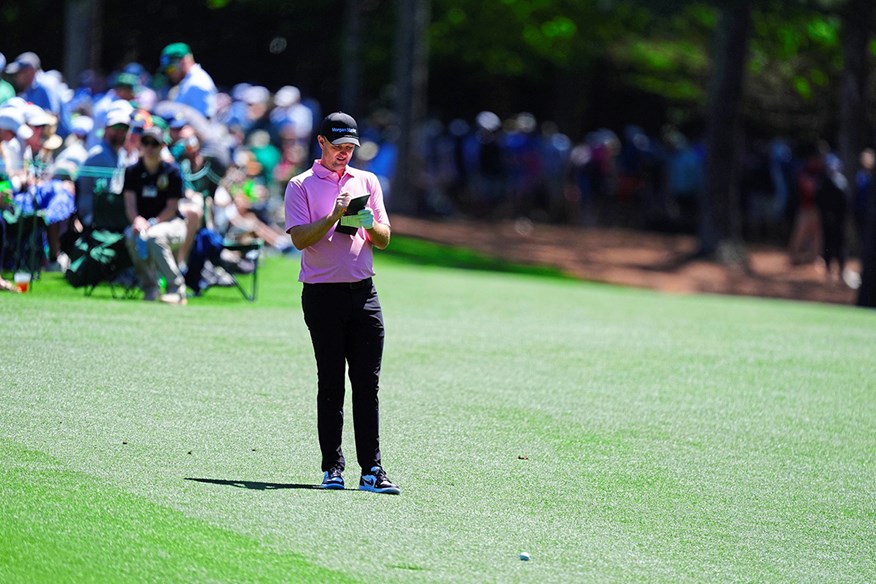
What are the shots you need?
I don’t think you need to draw the ball around there. It’s so much longer now that you don’t have to hook it around corners on holes like No.9 – that’s a straight tee shot now.
The 14th is long enough now that straight is good, too. Ten is probably the only hole where I hit something quite extreme (in terms of shape) off the tee. I don’t like to take driver too tight to the tree line. I take a 3-wood way right and bend it and hook it.
I can’t really think of any other tee shots where I need to hook it. The way I play, 13 is a high driver – I don’t try to draw it and if I run out, I run out.
Would it be fair to say it’s become less of a shot-maker’s course because of that?
It is a second-shot golf course so shot-making is important. It’s all about iron play – and that’s shot- making. Hitting holds into pins, draws, using slopes and shot-making around the greens.
You have to hit some really cool short game shots around Augusta if you’re going to do well.
Just how tough are those greens?
I think they’re tougher because of the slopes, for sure. We play surfaces as quick as Augusta maybe two or three times a year, but we don’t play them with such extreme slopes.
Very close to the pins at Augusta you often have a very steep ridge, so if you miss on the wrong side, you literally can’t stop the ball running down that ridge. The severity of some of the sideboards – as I call those ridges – is what we don’t often see.
How long did it take you to get comfortable playing at Augusta?
I think the very minute I walked into the clubhouse. My whole first experience there was magical and I’ve loved it ever since. I feel like I learn a nugget every year, so you never stop learning at Augusta.
I think it’s good to take a local caddie when you first play it. I’ve had six or seven different local caddies and they all have their own story – something they really want to share with you.
I remember going down there with Ian Poulter once and he got a read from one of the caddies. The guy says it’s a ball right, so Poults hits the putt and the ball breaks a bit more and misses low, so he goes to the caddie, “A ball right? What? A football!” It was such a brilliant line.
What secrets about playing Augusta well can you share with us?
We’ve learnt where we can be aggressive a bit more over the years. The 3rd, for example. We used to
lay back a lot and make a lot of fives. It’s a really hard shot even with a 9-iron in there and it’s semi-blind, so that’s a hole that I challenge more than I used to, thanks to trial and error. And just knowing the pins where you can be really aggressive because the bunker isn’t too bad.

The one most players know is the 4th. You can really challenge that front edge when the pin is only four or five paces over that bunker because if you hit it in the sand, you can play it up off the backboard and it comes down close. But if you pitch it too far into the green with your approach then it tracks left and you’ve got a really tough putt. That’s a hole where you’re really trying to make a two, whereas you’ve got to respect a lot of other holes.
Obviously, you want to take advantage of the par-5s. It’s one course that I putt from memory. You remember which putts break, which don’t, and where the slight pull is down to Rae’s Creek. People love to talk about that, but I don’t buy into it massively. I know certain putts that look one way and do a bit more.
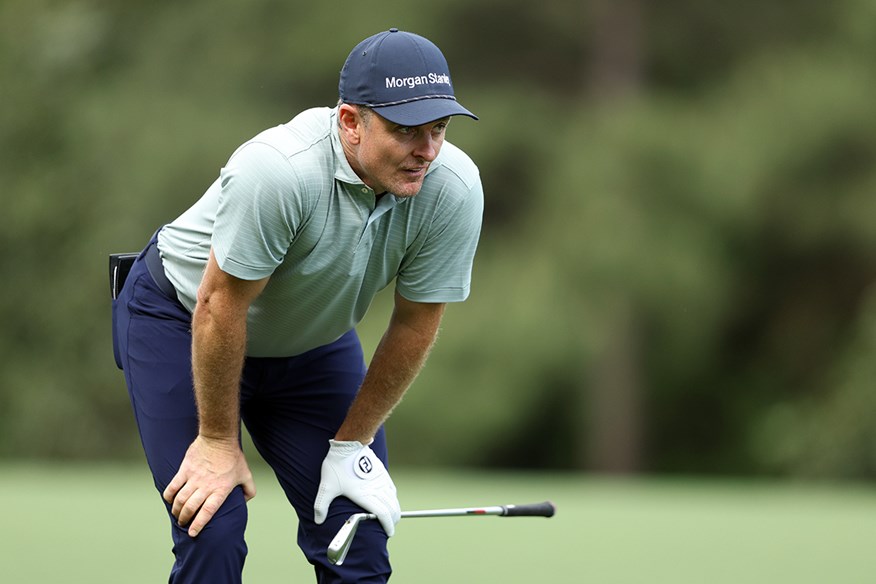
Taming Augusta’s deadly trio
The iconic Amen Corner can make or break a round. Rose explains his approach…
No.11
White Dogwood
520 yards | Par 4
This is one of Augusta’s toughest holes – and it’s made even more difficult by the fact you know you’re coming into Amen Corner. Having the experience to stay in the moment is crucial here. You really want a long, straight tee shot because that makes the second so much easier.

That pond looks threatening when you’re going in with a long iron or trying to manufacture something from a bad angle. There are three trees behind the green that we call the ‘cricket stumps’. I usually aim for the middle stump – around the left half of the bunker – no matter where the flag is.
A lot of guys bail out right, but it’s not an easy up-and-down, especially with a right pin. You can’t land the ball on the green because it slopes away, so you’ve got to hit a ‘bumbling’ shot into the grain so it can die before it reaches the green.
No.12
Golden Bell
155 yards | Par 3
It might be the shortest hole on the golf course, but you just have to respect 12. My goal on this hole is simply to get out of there with a clean scorecard. There’s certainly an elevation in your heart rate when you walk across from the 11th green to the 12th tee and see the amphitheatre of spectators around the tee. That’s what the hole does to you.
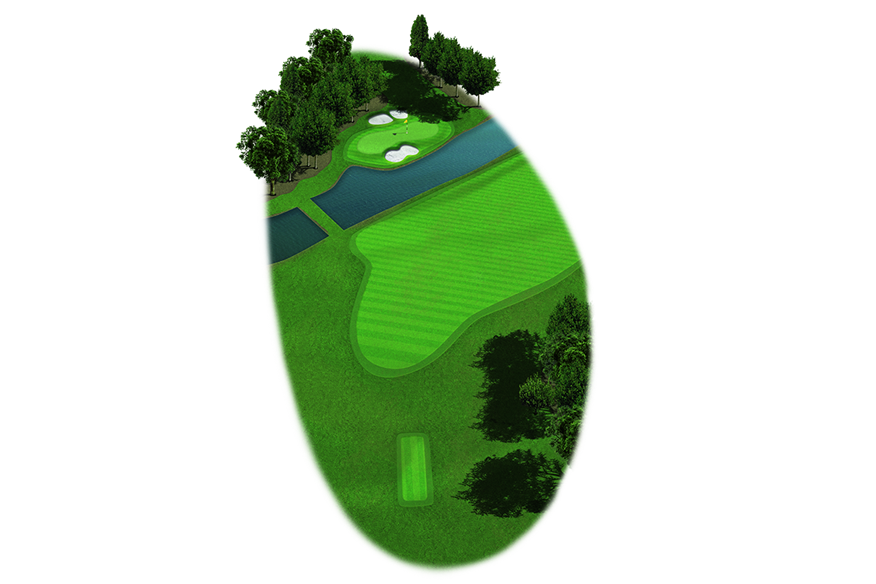
We have found that, on this hole, it’s better to play to a specific number (yardage) than to the pin. I’ll have a number in my mind that might very well not be the pin number and if we hit it that far, then we’ll have a birdie chance and avoid an error. As I said, get out of there without making a mistake – and if you make birdie it’s a huge bonus.
No.13
Azalea
545 yards | Par 5
The 13th speaks for itself. You’ve got to commit to your tee shot but, if you hit a good one round the corner, it sets up a long-iron into the green and a good chance for an eagle.
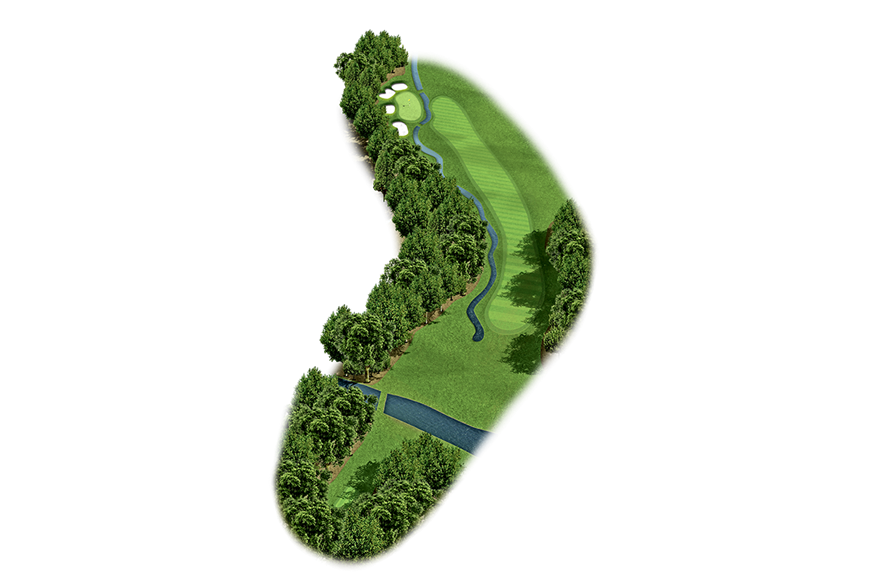
There aren’t too many good places to miss around the green but the slopes mean you can feed the ball really close to some pin positions, especially towards the front of the green. If you’ve played Amen Corner in level or one-under par, that sets you up for a good back nine.
More from the Masters
-
 There are no easy holes at Augusta.
There are no easy holes at Augusta.
-
 An in-depth look at the 11th hole at Augusta National.
An in-depth look at the 11th hole at Augusta National.
-
 An in-depth look at the 12th hole at Augusta National.
An in-depth look at the 12th hole at Augusta National.
-
 An in-depth look at the 13th hole at Augusta National.
An in-depth look at the 13th hole at Augusta National.
-
 Jack Nicklaus shot a 64 en route to winning his second Green Jacket at the Masters.
Jack Nicklaus shot a 64 en route to winning his second Green Jacket at the Masters.
-
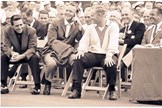 Jack Nicklaus sharing a joke with Gary Player and Arnold Palmer after winning the 1965 Masters.
Jack Nicklaus sharing a joke with Gary Player and Arnold Palmer after winning the 1965 Masters.
-
 Masters players will be keeping a keen eye on the leaderboard to see where the cut is sitting.
Masters players will be keeping a keen eye on the leaderboard to see where the cut is sitting.
-
 Justin Rose could become the second-oldest winner, after Jack Nicklaus, of the Masters should he succeed at his 20th attempt.
Justin Rose could become the second-oldest winner, after Jack Nicklaus, of the Masters should he succeed at his 20th attempt.
-
 Justin Rose needs a strong performance at the Masters to boost his Ryder Cup hopes.
Justin Rose needs a strong performance at the Masters to boost his Ryder Cup hopes.
